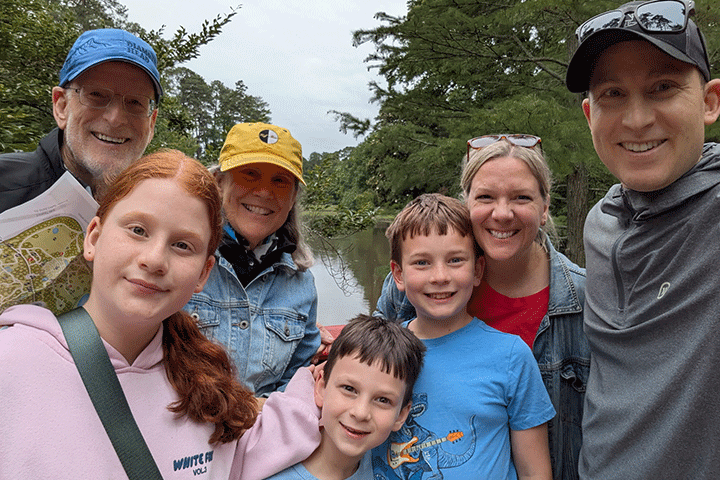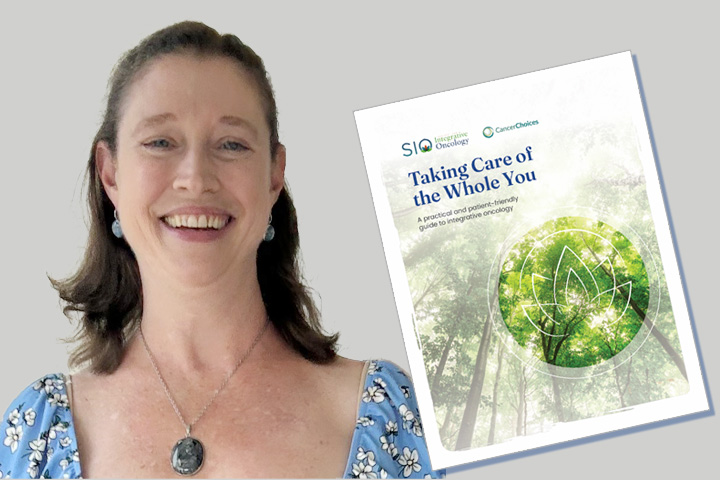Putting Familial Risk In Perspective

Back in the 1990s, little was known about the genetic underpinnings of pancreatic cancer.
Fast forward about 30 years, and today scientists know inherited genetics accounts for roughly 20-30 percent of pancreatic cancers. But only about 7-10 percent of pancreatic cancer patients will have an inheritable germline mutation, such as BRCA, found in testing. Another 5-10 percent or so will have a family history of pancreatic cancer, but not a known mutation.
Because of this increased knowledge, doctors now also know that some patients with germline mutations tend to have better outcomes. For example, some mutations may affect genes required for DNA repair, increasing their sensitivity to certain drugs—such as PARP inhibitors or platinum-based therapies such as oxaliplatin—used in patients with BRCA mutations. So regimens containing these drugs could become first-line treatment for those patients.
The National Familial Pancreatic Tumor Registry Has Contributed Much to Research
Although researchers across the globe are working diligently to better understand the basic biology of pancreatic cancer, much of the understanding gained over the last several decades can be attributed to the work of the National Familial Pancreatic Tumor Registry (NFPTR), an ongoing research registry started at Johns Hopkins Medicine (Baltimore, Maryland) in 1994. The multi-disciplinary group of experts has published more than 100 peer-reviewed studies, and the data gleaned from those studies not only helps inform the work of other researchers but has also shown that individuals with a family history of pancreatic cancer are at increased risk themselves.
The NFPTR’s work has also uncovered important pancreatic cancer susceptibility genes and aided in the development of tools to identify individuals at high risk for the development of the disease. “Our data shows that pancreas cancer risk is really very strongly dependent on family history, and that family history includes the degree of relationships, such as first-degree relatives like a parent or sibling versus a second-degree relative like an aunt, as well as the age those relatives developed pancreas cancer,” explains Alison Klein, Ph.D., M.H.S., director of the NFPTR. “Having relatives with the disease, no matter what degree, does not mean you’re going to develop pancreas cancer. But it does mean your risk is much higher than other people. So knowing risk is clearly important. It’s a terrible disease, so we want to catch it early in those who are deemed high-risk.”
Because pancreatic cancer is relatively rare, it’s often difficult to recruit the necessary number of individuals to design a robust early detection study. “A very important aspect of our work is helping researchers design those [early detection] studies because they [the researchers] would need to know how many people to include in order to get the best data,” says Klein, who also serves as Professor of Oncology and Co-Leader of the Cancer Prevention and Control Program at Johns Hopkins. “So our risk estimates inform the design of early detection studies and the risk/benefit analysis of screening trials.”
Building On Previous Research
In their most recent study published in the Journal of the National Cancer Institute, Klein and colleagues looked at the risk of pancreas cancer in a large prospective cohort. The study, dubbed, “Risk of Pancreatic Cancer in the Long-Term Prospective Follow-Up of Familial Pancreatic Cancer Kindreds,” was designed to determine the age-specific pancreatic cancer risk as a function of family history using prospective data.
The researchers looked at data from 21,141 individuals from 4,433 families enrolled in the National Familial Pancreatic Tumor Registry and compared that to data found in so-called SEER data found in the Surveillance, Epidemiology, and End Results Program. That program is designed to provide information on cancer statistics in an effort to reduce the cancer burden among the U.S. population. SEER data includes reports on all cancer cases reported to participating cancer registries and tracks the incidence of persons diagnosed with cancer during each year. It also collects follow-up information on all previously diagnosed patients until their death.
In the current study, the researchers compared their set of familial pancreatic cancers to SEER data. For example, those with familial pancreatic kindred members (kindreds with pancreatic cancer in two first-degree relatives or a pathogenic variant, for example) had a standardized incidence ratio of 4.86. “That’s just a way of saying 4.8 times as many pancreas cancers were found in our group, when compared to SEER data,” Klein explains. “The takeaway is that risk increases with the number of first-degree relatives with pancreas cancer.”
A similar study, also published in the Journal of the National Cancer Institute, was published in 2010. In that study, Klein and colleagues found that among the pancreatic kindred families, the age at which affected relatives were diagnosed was an important factor in other family members’ risk of developing the cancer.
Compared with the general population, people in families affected by familial pancreatic cancer had a six-fold higher risk of developing the disease. But the risk was increased nine-fold when a family member had been diagnosed with the disease before the age of 50, the researchers reported.
That study included more than 9,000 individuals from 1,718 families enrolled in the pancreatic cancer registry. And Klein and colleagues “felt it was time to add to the story” and revisit the issue since they could do comparisons among a larger cohort of people.
The current study shows that in familial kindreds where all pancreatic cancers developed after age 50, individuals with three or more first-degree relatives with pancreatic cancer had a lifetime risk by age 85 years of 18 percent. Among individuals with two first-degree relatives with pancreatic cancer, lifetime risk was 9 percent. And for individuals with one first-degree relative with pancreatic cancer, lifetime risk was 5 percent. Lifetime risk was even higher at 24 percent, 12 percent, and 7 percent, respectively, if there was a young-onset (younger than 50) pancreatic cancer in the family.
“Our study demonstrates the high pancreatic cancer risk in members of familial pancreatic cancer kindreds and a moderate pancreatic cancer risk in sporadic kindred members,” the researchers wrote. “In familial and sporadic kindreds, having a young-onset pancreatic cancer in the family was associated with a higher risk of pancreatic cancer.”
“None of this data was really surprising to me,” Klein says. “I work with people who think about pancreas cancer every day, all day, and I’ve been looking at data for 20 years.
“This data can help guide risk management of individuals with a family history of pancreatic cancer. There have been tremendous advances in imaging, and more cancers, especially in high-risk individuals in surveillance programs, are being diagnosed early so surgery is an option. Even pre-cancers can be found. But we still have a lot to learn. We’re looking for the causes of pancreas cancer, and there are a lot of very smart people working on this. I am hopeful about the future.”
If you or a family member has had pancreatic cancer, you may be eligible to enroll in the NFPTR. To learn more, visit the website.






